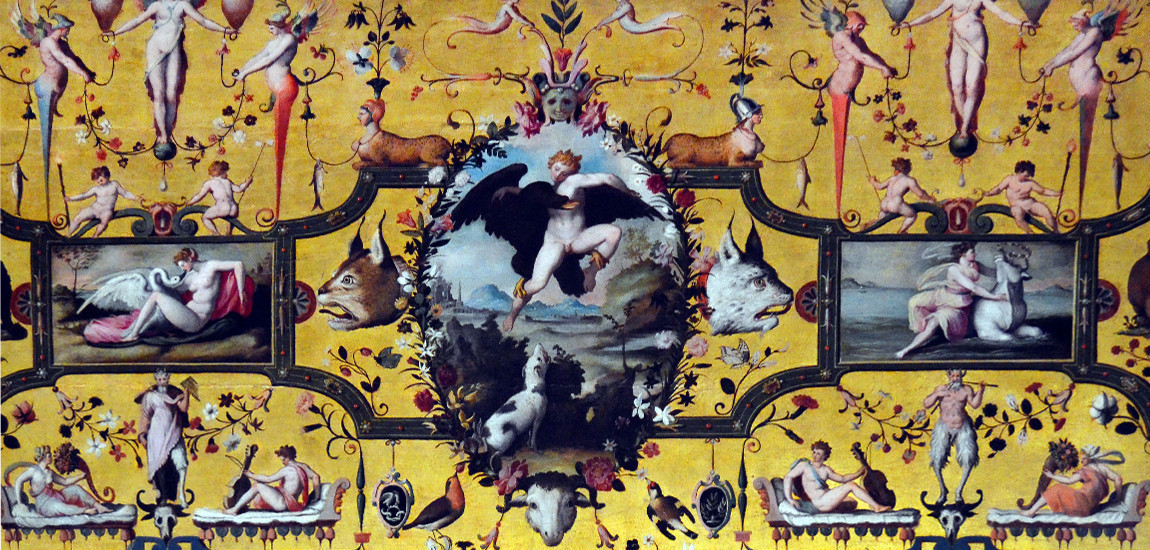
Grottesca: an extravagant ancient Rome decorative art rediscovered
The grottesca (or grotesque, from the italian grotta, cave) is a wall decoration characterized by a multitude of hybrid creatures, and zoomorphic figures depicted within a symmetrical decoration with naturalistic elements. The decoration appears airy and light thanks to the slender style of the figures. In Florence we have very beautiful examples, such as those in the Uffizi Gallery, in the Palazzo Vecchio or in the Bargello Museum.
Sometimes pure ornament,
sometimes a veritable encyclopedia of arts and sciences, the grottesca takes its name from the caves
of the Oppio hill in Rome, or the remains of Nero's Domus aurea, discovered in 1480. When a cave with wonderful
and strange fantastic decorations was discovered on the Oppio hill in a hole in
the ground, the artists of the time were totally fascinated, so much so that
they let themselves be dropped into the caves specifically to be able to
observe and reproduce them. Only later on they discovered that those caves were
nothing less than the ruins of Nero's imperial palace, built after the fire in 64 AD. C.
The first known examples
of grottesca date back to the second half of the 1st century BC, and
immediately aroused controversy because of the hybrid figures depicted,
considered too disproportionate, too imaginative and far from reality; and
because of the expensive colors with which they were painted, such as the
cinnabar, the purple or the blue of Armenia, brazenly displaying the wealth of
the patrons.
Despite this controversy, they were very widespread and following their
rediscovery in the sixteenth century they came back into fashion, since it was
precisely that strangeness that aroused so much criticism the reason for their
success.
According to Vasari, the first who managed to
reproduce the style of the grottesca
was the painter Morto da Feltre, after having studied them by descending into
the caves like many others.
However, it was Raphael who together with his assistant Giovanni da Udine reworked the forms of the grottesca in the paintings of the Vatican Loggias in Rome and spread them throughout Italy through his pupils.
With Mannerism, which is characterized by the depictions of animals and fantastic elements, there was the definitive affirmation of this decorative style, which was subsequently renewed in every era.
Over time, the term "grotesque" changed its meaning and entered common language indicating something bizarre, ironic, caricatured and ridiculous.
However, it is undeniable the beauty of these fantastic decorations - anything but "grotesque", but elegant and refined - which still today, five hundred years after their rediscovery, arouse amazement and interest.



